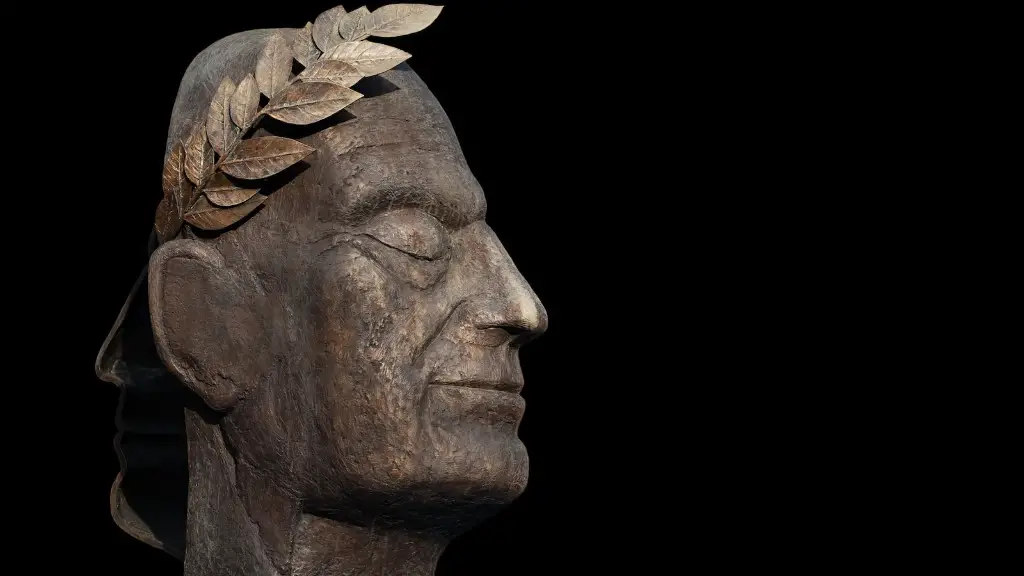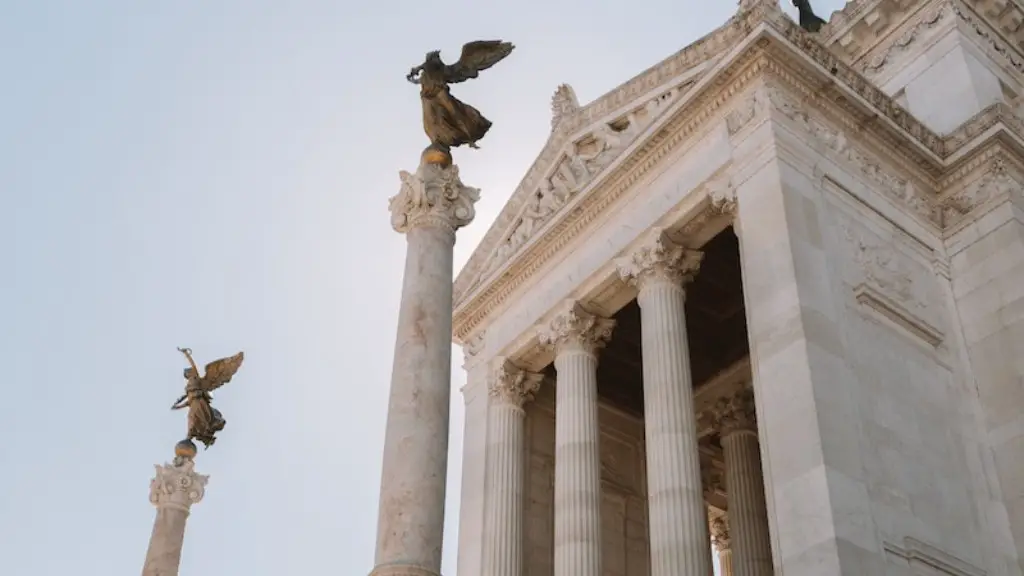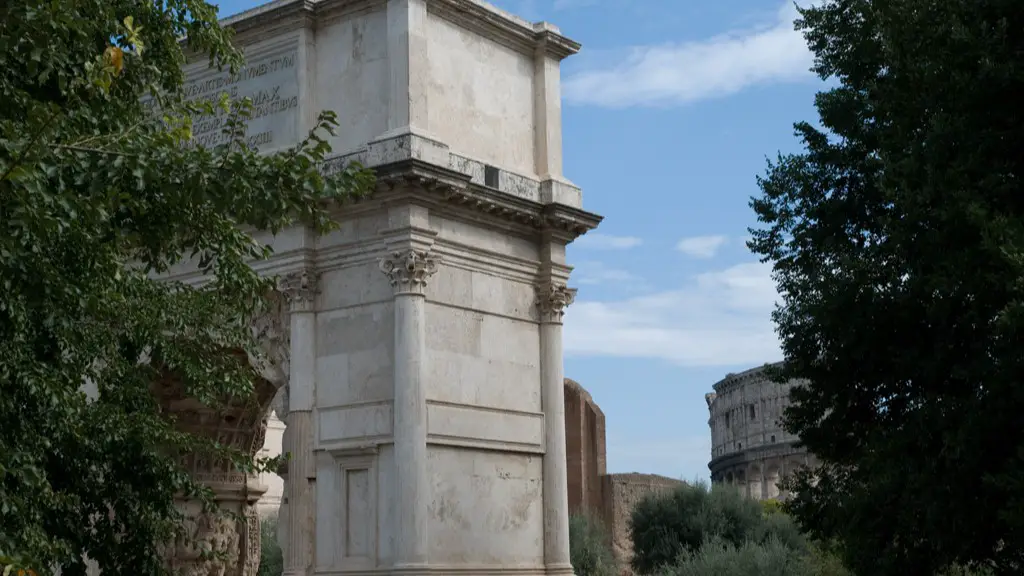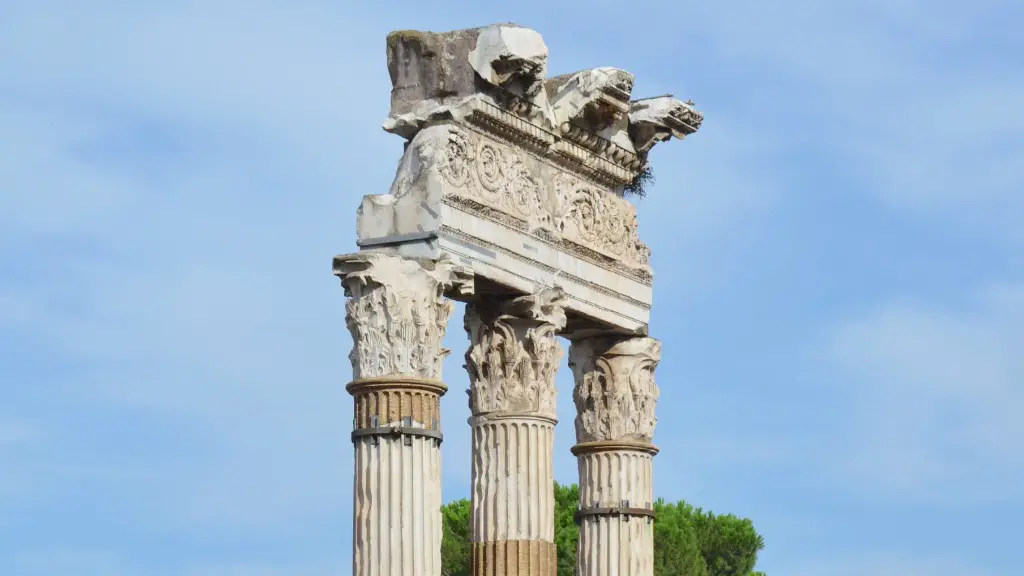Marriage in Ancient Rome
Ancient Rome was a patriarchal society, meaning fathers were seen as the dominant figures of their families. Marriages were usually arranged by the bride’s father in a bid to form alliances or gain financial security.
In the Roman Republic, ‘husband’ and ‘wife’ had different roles and rights – both were considered equal under the law. Fathers had control over who their daughters married, and husbands had control over their wives. This enabled them to provide protection and security to their families.
Often, the bride’s father would choose a suitor who had similar social standing and financial means. The suitor would then provide some form of compensation for the bride’s family, such as a dowry. This was often seen as a sign of commitment and honor.
Marriage in Ancient Rome was seen as an essential part of life – it was believed that the purpose of marriage was to produce legitimate heirs for the family. As a result, marriage was expected of all citizens, and those who did not follow the social norms were seen as immoral.
Arranged marriages also provided protection to women. In Ancient Rome, a woman’s legal and economic rights were dependent on her husband. By relying on her father to choose a partner, a woman was guaranteed some level of security and protection. This allowed her to live in relative comfort while her husband was away.
Marriage in Ancient Rome was seen as an important social institution, and it was treated with the utmost respect. It was seen as a keystone of the Roman Republic, and was viewed as a way to ensure its continued stability.
The Nuptial Ceremony
In Ancient Rome, marriage was typically a public ceremony. It consisted of two parts: the betrothal and the wedding. The betrothal was a symbolic exchange of money, symbols, and other tangible items between the families, and was typically arranged months in advance. The wedding, or nuptial ceremony, was the main event. This consisted of the bride and groom entering the ceremony under a veil, exchanging vows, and exchanging gifts.
The ceremony was usually held at the home of the bride’s family or a place of great importance in the community. During this time, the bride’s father would make a speech to declare her marriageable and welcome her new husband into the family. This was followed by prayers and sacrifices to the gods, who were seen as responsible for the union. This served to ensure each family’s continued prosperity and fortune.
Following the ceremony, the bride and groom would then conduct a formal walk around the village or city. This was a symbolic way of displaying their new union to the rest of the community and displayed the strength of their bond. This parade was often accompanied by music, food and wine, and gifts from the townspeople.
The final part of the ceremony consisted of the bride and groom being officially pronounced man and wife, and a feast in celebration of the union. This feast was hosted by the family of the bride, and was attended by the entire community. It usually included entertainment such as dancing, music and poetry, as well as plenty of food and wine. This celebratory atmosphere served as a reminder that the couple had become part of a much larger family.
The Divorce Process
Divorce was rare in Ancient Rome, and usually only occurred if both parties had mutually agreed. If a couple wished to divorce, they would need to appear before a magistrate and state their wishes. The magistrate would then consider both parties’ statements and decide if the divorce should be granted.
If the divorce was granted, the marriage contract would be voided and the dowry would be returned. The husband was not legally required to return the gifts he had given to his wife, though this was still seen as a sign of respect. Additionally, any children from the marriage would remain with the mother unless the father deemed it necessary.
Divorce in Ancient Rome was taken very seriously, and often viewed as a sign of immoral behavior. As a result, most couples opted to remain together, even in unhappy unions. This was due to the social stigma associated with divorce and the fact that it removed any financial security the wife had.
The Impact of Arranged Marriage in Ancient Rome
Arranged marriages were a social norm in Ancient Rome and were an integral part of their society. These marriages were seen as a way to gain financial stability, forge relationships and alliances, and form strong family bonds. Additionally, they provided protection and security to the bride and her family.
In modern times, marriages are no longer typically arranged, but the legacy of Ancient Rome still exists. Marriage is still seen by many as a way to ensure financial security, form strong family ties and provide protection to both parties. The concept of dowries is also still used in some cultures as a way for the bride’s family to protect her interests and honor the union.
Conclusion of Social Norms
Arranged marriages in Ancient Rome served a very important purpose, and were integral to their society. They enabled fathers to provide protection and stability to their families, while allowing husbands to control their wives’ legal and economic rights. Additionally, they provided an opportunity for families to gain financial security and form alliances.
Marriage in Ancient Rome was a complex process and was deeply ingrained in their culture and society. Even in modern times, some of their traditional practices are still being used – such as the concept of dowries. Ultimately, marriage in Ancient Rome was seen as a way to ensure that the family and their legacy were protected and respected.
Familial Expectations in Marriage
Marriage in Ancient Rome was often seen as a way for families to gain financial stability and ensure their legacy. Families would often choose a suitor for their daughter who had a similar social standing and was financially well off. Additionally, the groom would provide some form of compensation for the bride’s family in the form of a dowry.
Marriages were also essential for the continuation of the Roman Republic. It was believed that legitimate heirs were essential for its stability and longevity, and so marriage was expected of all citizens. Those who refused to follow the social norms were seen as immoral.
In Ancient Rome, women were heavily reliant on their husbands for protection and financial stability. As a result, arranged marriages were seen as a way to guarantee that the bride and her family were taken care of, both financially and socially. Additionally, by relying on her father to choose a partner, a woman was ensured some level of security and protection.
Empowerment Through Marriage
Despite the patriarchal nature of marriage in Ancient Rome, it did provide some empowerment for women. Through arranged marriages, women were given a degree of control over their own lives. They had access to financial security and could choose a partner who could provide protection and stability.
Additionally, marriages in Ancient Rome were seen as public ceremonies. This public display of the union served to remind the community of their commitment and provide a sense of confidence to the newlyweds. This also imbued the couple with a sense of power and security in the eyes of their community.
Finally, marriage in Ancient Rome was seen as a symbol of strength and loyalty. The couples and families involved were seen as being deeply connected, both socially and financially. This was a way for the family to gain stability and ensure the continued prosperity and success of their legacy.
The Legacy of Ancient Rome’s Marriage Practices
Today, marriage is not typically arranged by families. However, the legacy of Ancient Rome still remains. Marriage is still seen as a way to gain financial security and form strong family bonds, as well as a source of protection for both parties. Additionally, some cultures still use the concept of dowries to honor the union and protect the bride’s interests.
Ultimately, marriage in Ancient Rome was an essential component of their society. It enabled families to protect their children, form alliances, and gain financial stability. Although the traditional process of marriage has changed, the legacy of Ancient Rome still exists today in the form of marriage customs, beliefs and values.





